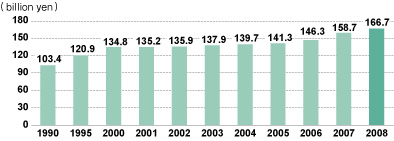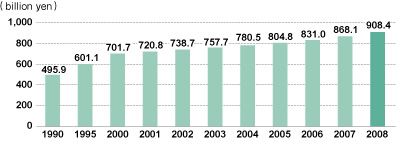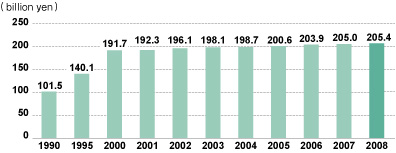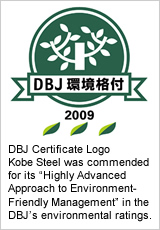Home > About Us > Corporate Social Responsibility > Sustainability Report > Sustainability Report 2009 > Environmental Accounting
 Environmental Accounting
Environmental Accounting
| With a quantitative understanding of the costs and effects of environmental protection measures, the Kobe Steel Group is using an environmental accounting method evaluating investment and effectiveness for more cost-effective environment management. |
| Environment-related Investment |
| To reduce environmental impact, investment in the building and maintenance of environment-friendly facilities is ongoing, and wide-ranging environment-related measures have been introduced. Improvements to efficiency are also being made by eliminating some production processes. |
| Total environment-related capital investment (Parent only) | |

| Total environment-related maintenance costs (Parent only) | |

| Total energy-saving-related capital investment (Parent only) | |

Values above graphs indicate total summed up from 1970.
| Capital investment for fiscal 2008 totaled approximately 9.6 billion yen and expenditure reached about 43.7 billion yen. Some 49% of this expenditure went to atmospheric pollution prevention, 14% went to water pollution prevention, and 23% went to waste and by-product processing. Also, about 3.2 billion yen, or 7% of total expenditure, was spent on research and development. |
| Breakdown of Capital Investment and Expenditure (Parent only) | |
| (unit: billion yen) |
|
|||||||||||||||||||||||||||||||||||||||||||||
| *Expenditure on measures to prevent global warming is included as operations. Therefore, only capital investment is listed. |
| Environment Conservation Effect |
| For effects of environmental conservation, please refer to Measures to Prevent Global Warming and Resource Recycling. The benefit of investment to control dust is shown as the amount of dustfall. |
|
|||||||||||


